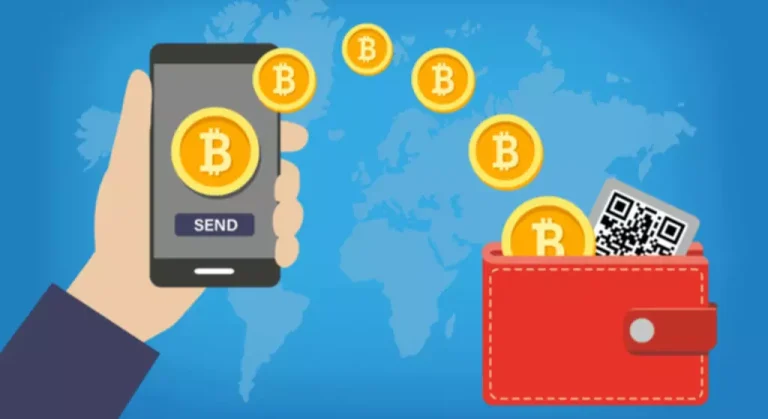This incentivizes liquidity provision and fosters a vibrant ecosystem of liquidity providers. A liquidity pool helps to take care of liquidity on a network by rewarding customers who contribute assets to the pool. These users receive liquid pool tokens as a reward, that are a portion of the fees from trades that happen within the pool. There are varied uses for these tokens on a DeFi network, similar to exchanges or other good contracts. Common DeFi exchanges that use these tokens on the Ethereum community (ERC-2) are Uniswap and SushiSwap, while PancakeSwap uses BEP-20 tokens on the BNB Chain.
High slippage arises when liquidity is restricted, resulting in potential losses or decreased features for traders. Understanding slippage and actively managing liquidity pools are crucial for optimizing trading strategies on fixed product platforms. A liquidity pool is a smart contract the place tokens are locked for the aim of offering liquidity. Some of the important concepts required to understand how liquidity pools and decentralised exchanges work include liquidity suppliers, liquidity tokens and automated market makers. Liquidity pools purpose to resolve the problem of illiquid markets by incentivizing customers themselves to provide crypto liquidity for a share of trading fees. Trading with liquidity pool protocols like Bancor or Uniswap requires no purchaser and vendor matching.
Liquidity pools helped tackle this problem by having users be incentivized to provide liquidity instead of having a seller and purchaser match in an order e-book. This provided a robust, decentralized answer to liquidity in DeFi, and was instrumental in unlocking the expansion of the DeFi sector. Bisq is an off-chain, peer-to-peer decentralized crypto buying and selling platform for getting and promoting BTC in exchange for fiat and other cryptocurrencies. The Bisq exchange utilizes a community of nodes to facilitate trades between users.
- These pools, designed to supply liquidity to decentralized finance (DeFi) platforms, are vulnerable to price fluctuations that may influence their overall liquidity and danger administration strategies.
- This incentivizes LPs to provide liquidity to the pool, as they earn rewards in return for his or her contributions.
- We can anticipate the emergence of cross-chain liquidity swimming pools, enabling seamless interoperability between different blockchain networks.
- Watch out for projects the place designers can modify the principles of the pool the way they need.
- Participating in these incentivized liquidity swimming pools as a provider to get the maximum amount of LP tokens is recognized as liquidity mining.
There are seven separate swimming pools on the platform, every with a novel ERC-20 pool pair. Now, let’s check out the three most used crypto liquidity pools as of 2022, together with a description of their key characteristics. To mitigate these dangers, LPs make use of various strategies like diversifying their portfolios, utilizing hedging techniques, and actively monitoring market circumstances.
Slippage is the difference between the anticipated price of a commerce and the worth at which it’s executed. Slippage is most common during periods of upper volatility, and can also occur when a big order is executed however there is not sufficient quantity at the selected price to keep up the bid-ask spread. When a commerce is executed, the property are swapped inside the liquidity pool, and the LPs earn a fee based on the scale of the trade. The charge is mechanically distributed to the LPs based on their share of the pool’s assets. However, Curve is unusual as a end result of it doesn’t but have a local token, though one could additionally be coming soon. Because of this, it provides to change for several pools of stablecoins and crypto assets, similar to Compound, BUSD, and others.
Liquidity suppliers are like the lifeblood of monetary markets as a end result of they play a key position in guaranteeing the provision and stability of liquidity. Their primary perform is to offer assets or funds to liquidity pools, facilitating trading and guaranteeing that buyers and sellers can execute transactions efficiently. By contributing their assets, liquidity providers enhance market depth and scale back price volatility. THORChain is a decentralized change that has 8 supported blockchains, together with Bitcoin. Based on the Cosmos software growth equipment (SDK), it makes use of an automated market maker (AMM) model to swap digital property across blockchain networks in a non-custodial method. By enabling cross-chain swaps, THORChain empowers crypto merchants to maneuver digital property across ecosystems with out relying on centralized entities.
How Do Crypto Liquidity Swimming Pools Work?
These incentives purpose to attract and retain liquidity providers, encouraging their continued participation in the liquidity provision course of. The constant product formula, exemplified by platforms like Uniswap, revolutionizes value discovery and pool stability upkeep. This algorithmic strategy ensures a continuous product of reserves in a liquidity pool, allowing for environment friendly trading without relying on centralized intermediaries. Liquidity swimming pools improve market liquidity by permitting for more efficient worth discovery, lowering slippage, and increasing market liquidity. They also make it simpler to make loans and earn passive revenue through yield farming and liquidity mining. In monetary markets similar to international trade markets, inventory markets, bond markets, there must be some mechanism for providing liquidity in order that trade in the asset can take place.

DeFi, or decentralized finance—a catch-all time period for monetary companies and merchandise on the blockchain—is no totally different. There won’t be much change for crypto liquidity pools unless DeFi addresses the transactional facet of liquidity. It takes substantial time to transform an asset into money if there’s not enough liquidity on the market. High liquidity means that the process of turning assets into cash whereas stopping sudden value adjustments is fast and effective. Regular audits help establish and rectify vulnerabilities, ensuring good contracts operate as meant and decrease the chance of exploits.
The initial deposit amount must stability attracting traders and maintaining stability. Simply said, it denotes the power to transform investment into money quickly and at a reasonable price. It is critical for the graceful operation of markets as a outcome of it permits individuals to enter and exit positions expeditiously, decreasing transaction costs and market volatility. Centralised exchanges in the cryptocurrency ecosystem that implement an order e-book system carry over all the issues of centralisation in conventional finance, which may make them unattractive. However, decentralised order books have been discovered to be costly to implement on a blockchain.
How Do Centralised Exchanges Work?
An operational crypto liquidity pool have to be designed in a way that incentivizes crypto liquidity providers to stake their property in a pool. That’s why most liquidity suppliers earn buying and selling fees and crypto rewards from the exchanges upon which they pool tokens. When a user supplies a pool with liquidity, the supplier is often rewarded with liquidity provider (LP) tokens.
Nonetheless, individuals should pay attention to the risks and caution when participating with these new liquidity mechanisms. To create a better buying and selling expertise, numerous protocols offer even more incentives for customers to supply liquidity by offering more tokens for specific “incentivized” pools. Participating in these incentivized liquidity pools as a supplier to get the maximum quantity of LP tokens is known as liquidity mining.
Chainlink
There are various varieties of liquidity pools, and every one serves a different function. From traditional Constant Product pools to the versatile Hybrid Pools, every has options that attraction to completely different providers. Nansen, a blockchain analytics platform, discovered that 42% of yield farmers who provide liquidity to a pool on the launch day exit the pool within 24 hours.
Constant analysis and adaptation of risk administration methods turn out to be crucial to ensure the steadiness and sustainability of liquidity swimming pools amidst worth fluctuations and market uncertainties. This aggregation of liquidity enhances market depth, guaranteeing enough funds are available to facilitate trades and scale back price slippage. Additionally, Liquidity Pools promote market efficiency by eliminating order book limitations. Instead of relying solely on order matching, participants can trade directly from the pooled liquidity.

Liquidity swimming pools play a prominent role in making a decentralized finance (DeFi) system, which is gaining increasingly recognition in the crypto sphere. AMMs additionally permit for larger transparency and decentralization as they function on blockchain networks. However, AMMs may have limitations relating to worth slippage and dealing with extreme market conditions, as they rely on predefined mathematical formulas rather than human judgment and intervention. In comparability to conventional market-making fashions, AMMs supply a quantity of advantages. They provide continuous liquidity with out relying on exterior market makers or intermediaries, which boosts accessibility and reduces costs.
AMMs make the most of these liquidity swimming pools to calculate prices based mostly on the ratio of tokens in the pool, making certain fair and environment friendly trading. Compared to conventional liquidity sources, the advantages of Liquidity swimming pools in DeFi platforms are miles apart What Are Liquidity Pools in Crypto. Firstly, they provide a permissionless and decentralized approach, permitting anyone with compatible property to turn out to be a liquidity supplier with out requiring permission from centralized intermediaries. This democratizes entry to liquidity provision and promotes financial inclusion.
How Liquidity Pool Works
DeversiFi Protocol stands tall as a leading liquidity protocol, empowering users with unparalleled buying and selling capabilities. It harnesses the facility of decentralized finance to provide a seamless and secure trading experience. Uniswap’s popularity surged because of its simplicity, low fees, and permissionless nature, empowering anybody to become a liquidity supplier. As a trailblazer in DeFi, Uniswap has catalyzed innovation and reworked the landscape of decentralized finance. In return for his or her contribution, liquidity suppliers are typically rewarded with transaction fees and different incentives, similar to yield farming rewards or governance tokens.
Ethereum
This is pretty much what happens with rug pulls, however it could additionally occur naturally if the market doesn’t provide enough liquidity. Liquidity swimming pools are an innovation of the crypto business, with no instant equal in conventional https://www.xcritical.in/ finance. In addition to providing a lifeline to a DeFi protocol’s core activities, liquidity swimming pools also serve as hotbeds for buyers with an appetite for high threat and excessive reward.
Oasis Community
Furthermore, new merchants and liquidity providers can use liquidity pools to deal with confidence issues in cryptocurrency buying and selling. Decentralized finance (DeFi) has gained vital traction in current times, revolutionizing the standard financial panorama. Within the DeFi ecosystem, several key parts have emerged, together with decentralized exchanges (DEXs), yield farming platforms, decentralized finance purposes, and cross-chain liquidity swimming pools. Cross-chain Liquidity Pools — facilitate the seamless switch of assets across completely different blockchain networks. Thorchain enables cross-chain swaps by offering liquidity pools that enable customers to commerce property from numerous blockchains.
The protocol depends heavily on atomic swaps, and a community of users, liquidity suppliers, and aggregators. When someone sells token A to buy token B on a decentralized change, they depend on tokens in the A/B liquidity pool provided by other users. When they purchase B tokens, there will now be fewer B tokens in the pool, and the price of B will go up.
Calculating and accumulating buying and selling charges play a vital function in the monetary ecosystem. Efficient fee assortment processes ensure correct and well timed revenue technology. And after all, this finally allows users to delve into lots of the trustless applied sciences being built on Bitcoin and different blockchains right now. LNSwap, a Trust Machines product, can also be a protocol that enables users to swap their Bitcoin for digital assets on the Stacks Bitcoin layer, and vice versa.